#late jurassic
Text

Digital sketch of Allosaurus fragilis
#paleoart#dinosaur#dinosaurs#paleontology#allosaurus fragilis#allosaurus#theropods#theropoda#theropod#dinosaur art#dinosaur artwork#paleontography#paleoillustration#jurassic period#late jurassic#morrison formation#saurischia
381 notes
·
View notes
Text
"Jingia" dongxingensis Ren et al., 2024 (new genus and species)

(Back vertebrae of "Jingia" dongxingensis [scale bar = 10 cm], from Ren et al., 2024)
Meaning of name: Jingia = for the Jing people; dongxingensis = from Dongxing
Age: Late Jurassic (Kimmeridgian?)
Where found: Dongxing Formation, Guangxi, China
How much is known: Partial skeleton of one individual including several vertebrae and limb bones.
Notes: "Jingia" was a sauropod probably closely related to Mamenchisaurus. Mamenchisaurus-like sauropods appear to have been very diverse in the Late Jurassic of East Asia. "Jingia" differs from other such sauropods mainly in the shape and proportions of its vertebrae.
Unfortunately, the genus name Jingia had already been used for a moth in 1983, so a new genus will need to be coined for this dinosaur.
Reference: Ren, X.-X., X.-R. Wang, Y.-N. Ji, Z. Guo, and Q. Ji. 2024. The first mamenchisaurid from the Upper Jurassic Dongxing Formation of Guangxi, southernmost China. Historical Biology advance online publication. doi: 10.1080/08912963.2024.2309287
89 notes
·
View notes
Text
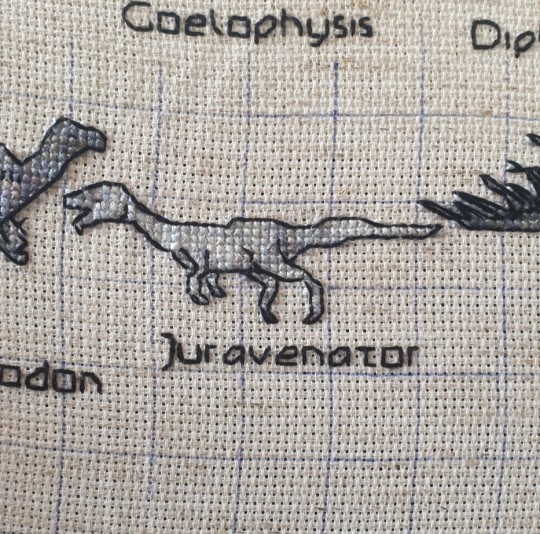
October's dino is the Juravenator!
The Juravenator is a very small dinosaur from the late Jurassic era, it's known from a single juvenile specimen, though a 2020 study suggested it may in fact be a hatchling Megalosauroid.
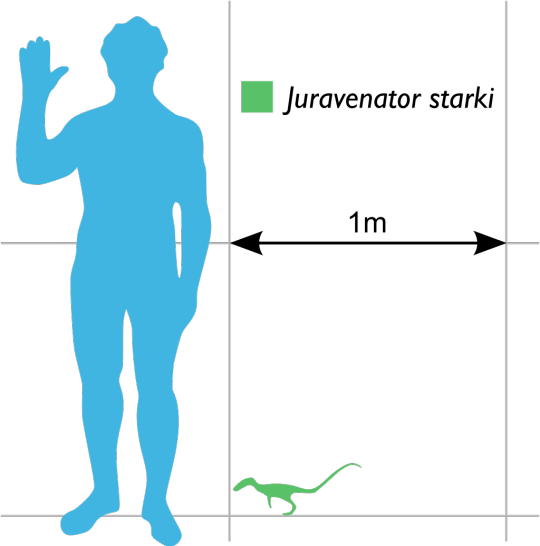
#my content#dinosaur#craftblr#crafter#crafting#queer crafts#trans crafter#crafts#cross stitch#needlework#dino#project || dinos#juravenator#late jurassic#late jurrasic era
42 notes
·
View notes
Text
Monday Musings: What caused the end of the Jurassic Period?

That's a tough question to answer. Scientists has a few hypotheses:
1.) Major Marine Regression
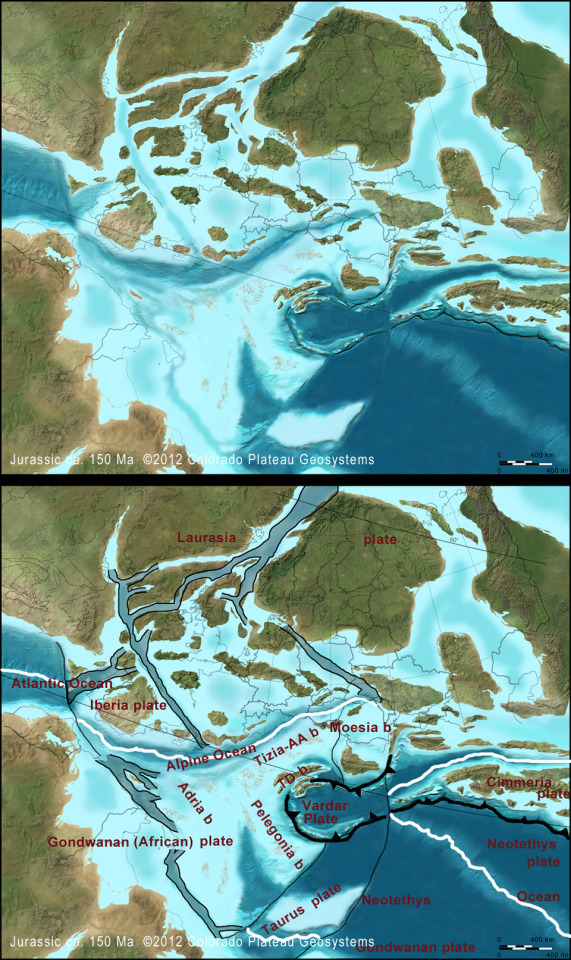

The is evidence in Europe of a major sea level drop which would have caused localized extinctions. I mean, look how low sea level dropped within 25 million years!
2.) Volcanism
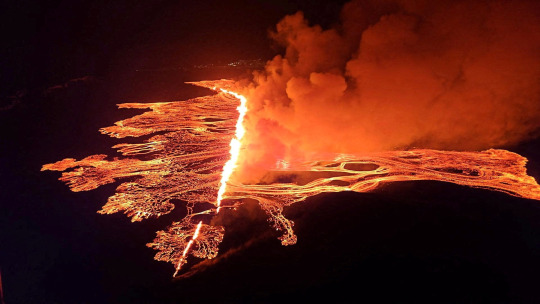
The Tithonian stage of the Late Jurassic saw the creation of a large volcanic plateau in the north Pacific and numerous volcanic deposits where Gondwana was beginning to separate. None of these explain the Laurasian extinctions though.
3.) Asteroid Impact

There were three minor asteroid impacts during the Late Jurassic; one in South Africa, one in Australia, and one in Norway. None were large enough to have a global impact.
5.) Sampling Bias

We simply might just be missing part of the picture. In western North America, we are actually missing a chunk of time in our rocks between the end of the Jurassic and the beginning of the Cretaceous. We also see many Jurassic lagerstätten worldwide and a definite lack of such in the early Cretaceous. There also appear to be decreases in sauropod diversity, megalosaurids, and stegosaurids as well as complete extinction of non-pterodactyloid pterosaurs. This could be because they real were going extinct or because they moved to enviorments that don't preserve fossils. We may never know.
6.) There wasn't a mass extinction, just a faunal turnover. This something we can see in the Cedar Mountain Formation. Perhaps there was another one from Jurassic to Cretaceous, we just haven't found it yet.

As of right now, the boundary between the Jurassic and Cretaceous is formally undefined due to the presence of more endemic flora and fauna than cosmopolitan (more species specific to one area than global distribution). What is agreed upon was that the Jurassic ended in a cooling period that continued into the early Cretaceous. Maybe one day we will have more answers but for now it remains a mystery.
17 notes
·
View notes
Text
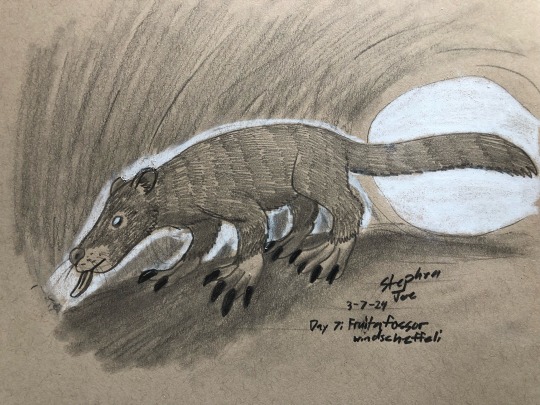
Day 7: Fruitafossor windscheffeli
A termite-eating theriimorph mammal endemic to North America during the Late Jurassic period around 150 million years ago.
10 notes
·
View notes
Text

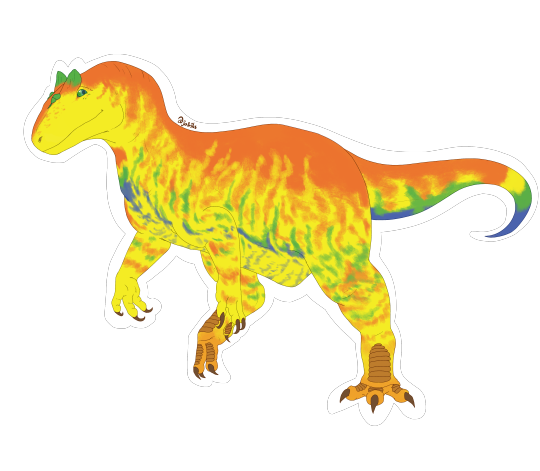
graysexual ceratosaurus & questioning allosaurus !!
they can both be found here ~
#ceratosaurus is kinda underrated tbh i love em#ceratosaurus#ceratosaurus nasicornis#allosaurus#allosaurus fragilis#dinosaur#dinosaurs#theropod dinosaur#theropod#theropoda#jurassic period#late jurassic#paleontology#paleoart#lgbt#lgbtq#lgbtq pride#graysexual#graysexual pride#questioning#questioning pride#digital art#dinosaur art#pride#my art
47 notes
·
View notes
Text

Megalosaurus bucklandii done in August for my friend's Birthday. This is the first non-avian dinosaur named (back in 1827). Since then, many specimens from Europe, North America and Africa have been attributed to it (among them Dilophosaurus, Carcharodontosaurus and even Plateosaurus), but today this species is limited to material from the Middle Jurassic of Oxfordshire (England). Initially, Megalosaurus was represented as a four-legged reptile, similar to a crocodile with the limbs of a large mammal. Now its appearance seems completely different. Despite its historical significance, Megalosaurus is still not well studied.
Paint Tool Sai 2.0, 2023.
#megalosaurus bucklandii#megalosaurus#torvosaurus#eustreptospondylus#megalosauridae#megalosauroidea#theropod#late jurassic#paleoart
19 notes
·
View notes
Text
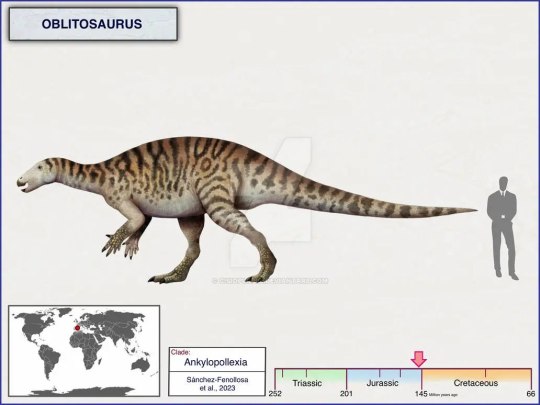
Oblitosaurus
Oblitosaurus — рід анкілоплексисових орнітоподових динозаврів з пізньоюрської формації Вільяр-дель-Арзобіспо в Іспанії. Типовий вид — Oblitosaurus bunnueli.
Повний текст на сайті "Вимерлий світ":
https://extinctworld.in.ua/oblitosaurus/
#oblitosaurus#dinosaur#jurassic#late jurassic#jurassic period#spain#dinosaurs#ornithopoda#paleontology#paleoart#prehistoric#animals#extinct#fossils#digital art#sciart#palaeoblr#article#палеоарт#палеонтологія#ukraine#ukrainian#україна#мова#українська мова#ua#тварини#арт#динозавр
22 notes
·
View notes
Text

Stegosaurus keeps an allosauroid at bay, as dusk settles upon a late Turonian floodplain.
12 notes
·
View notes
Text

Scientists managed to reconstruct what this deformed brontosaurus may have looked like while eating nutritious leaves! As you can see, it oddly resembles that of a mammal, how strange! More tests are on the way to figure out the truth!
#jerma fandom#jerma985#limethechef#brontosaurus#scientists#late jurassic#discovery of the centuary!#leaves#yummy yummy#but frfr#no fucking way
16 notes
·
View notes
Text
Late Jurrasic
Baby Camarasaurus getting a small meal. Ceratosaurus lays still waiting for his time to strike.
Perspective Animation practice
#animation#ceratosaurus#camarasaurus#late jurassic#jurrasic#izzypancakes#perspective#dinosaur#dinosaur art#dinosaur animation
16 notes
·
View notes
Text
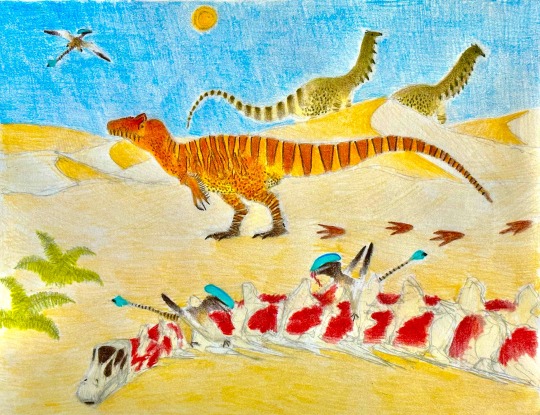
Big Al Prowling his Territory - A lone Allosaurus jimmadseni strolls across a landscape of sprawling sand dunes as two Harpactognathus feast on the carcass of an Apatosaurus that has died of thirst and two A.louisae ascend one of the giant dunes in the background, 150 million years ago in what is now the Morrison Formation of Wyoming.
Having sustained multiple pathologies throughout their lives, including severe foot infections or rib injuries, “Big Al” and “Big Al ll” were and still remain one of the most fascinating dinosaur specimens ever found in the Morrison Formation.
#paleoart#dinosaur#dinosaurs#paleontology#paleoillustration#allosaurus jimmadseni#allosaurus#apatosaurus#sauropod#harpactognathus#jurassic#jurassic period#morrison formation#late jurassic#big al#dinosauria#dinosaurios#dinosaur illustration#dinosaur artwork#dinosaur art#desert#sand dunes
84 notes
·
View notes
Text
Fujianvenator prodigiosus Xu et al., 2023 (new genus and species)
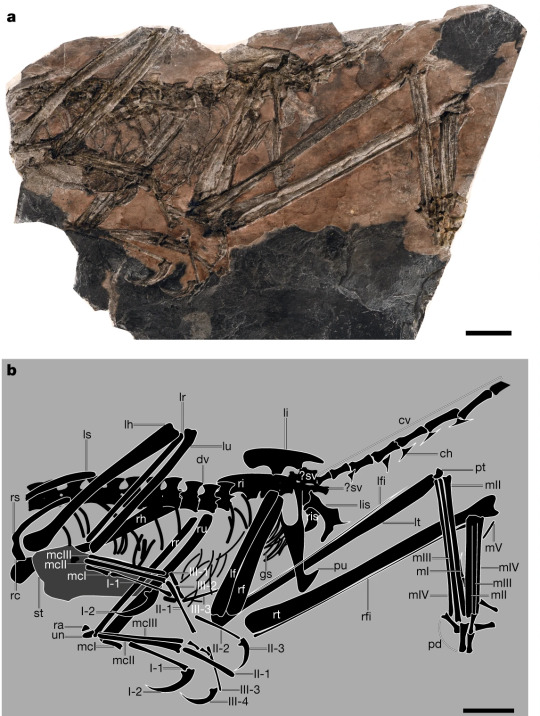
(Type specimen of Fujianvenator prodigiosus [scale bars = 20 mm], from Xu et al., 2023)
Meaning of name: Fujianvenator = Fujian hunter [in Latin]; prodigiosus = bizarre [in Latin]
Age: Late Jurassic (Tithonian), 149.9–150.2 million years ago
Where found: Nanyuan Formation, Fujian, China
How much is known: Partial skeleton of one individual including most of the trunk and limbs.
Notes: Fujianvenator was an early avialan, a group of mostly flight-capable theropod dinosaurs that also contains modern birds. Most members of this group, including modern birds, have short tails, but like other Jurassic avialans, such as Archaeopteryx and Anchiornis, Fujianvenator retained the ancestrally long tail found in most other dinosaurs. It had unusually long lower legs and feet for its size, not just for an avialan but for a theropod of any kind, which may suggest specialization towards a running or wading lifestyle.
In addition to being a newly named dinosaur, Fujianvenator comes from a newly discovered fossil site, from which over 100 reptile fossils have been uncovered so far. Given that well-preserved fossils of Jurassic avialans are only known from a few localities worldwide, this new site has the potential to become a valuable resource for understanding the early diversity and evolution of these theropods.
Reference: Xu, L., M. Wang, R. Chen, L. Dong, M. Lin, X. Xu, J. Tang, H. You, G. Zhou, L. Wang, W. He, Y. Li, C. Zhang, and Z. Zhou. 2023. A new avialan theropod from an emerging Jurassic terrestrial fauna. Nature advance online publication. doi: 10.1038/s41586-023-06513-7
192 notes
·
View notes
Text

November's dino is the Kentrosaurus.
The kentrosaurus is another friend from the Late Jurrasic era! His name translates to 'pickle lizard' which I personally find far funnier than I'm sure it's meant to.
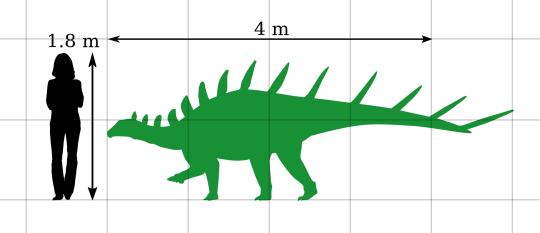
#my content#dinosaur#craftblr#crafter#crafting#queer crafts#trans crafter#crafts#cross stitch#needlework#dino#project || dinos#Kentrosaurus#late jurassic#late jurassic era
36 notes
·
View notes
Text
HAPPY NEW YEAR and some MONDAY MUSINGS
Hope you all had a fun and safe New Year's Eve! This month we will be talking about my favorite rock formation: the Morrison and today we will specifically be discussing the sauropods. The Morrison Formation is probably best known for the many sauropods found in it but are there too many? We don't really have an analogue today to compare to. The closest is the African savanna and but the megafauna there is very different from each other.
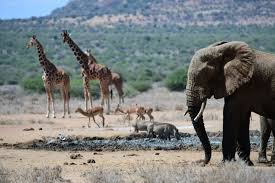
Let's look at a list of the sauropods found in the Morrison Formation:
Haplocanthosaurus (possibly 2 species)
Maraapunisaurus (now lost)
Dyslocosaurus
Smitanosaurus
Suuwassea
Amphicoelias
Apatosaurus (3 species)
Atlantosaurus (dubious)
Brontosaurus (3 species)
Barosaurus (2 species)
Diplodocus (3 species)
Seismosaurus (considered a species of Diplodocus by some)
Galeamopus (2 species)
Kaatedocus
Supersaurus
Brachiosaurus
Camarasaurus (5 species)
Dystrophaeus
That's 32 different sauropods. Imagine 32 different elephant species/genus' living all together on the African savanna. That's a lot for one environment but we're gonna dive in and see if this really is too much.

The Morrison Formation covers an area of 1.5 million square kilometers (600,000 square miles)
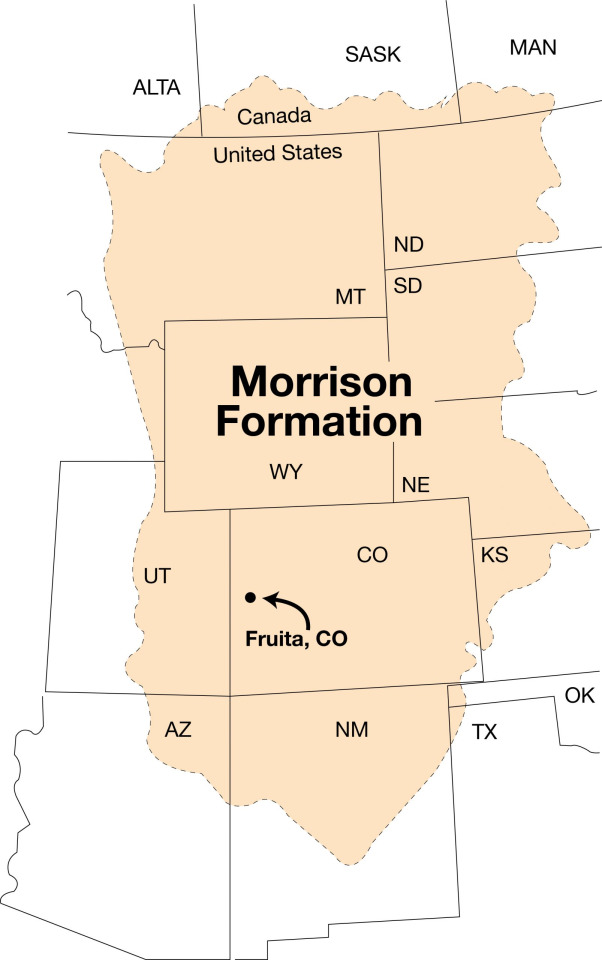
and spans over 10 million years.

That changes things. Now, let's start seeing where everything falls. First, we're going to remove sauropods that are dubious, unknown, or lost. Basically, ones that probably don't exist or can't be proven to exist. That removes 6 of them.
Then we look at where each of them was found. Outcrops of Morrison with dinosaur fossils have been found in 7 different states: South Dakota, Montana, Wyoming, Utah, Colorado, New Mexico and Oklahoma.
South Dakota has one sauropod: Barosaurus lentus. Okay, that's not too bad.

New Mexico also only has one sauropod as well, Seismosaurus hallorum. Now, some paleontologists believe it's a species of Diplodocus but that's not important for this post.
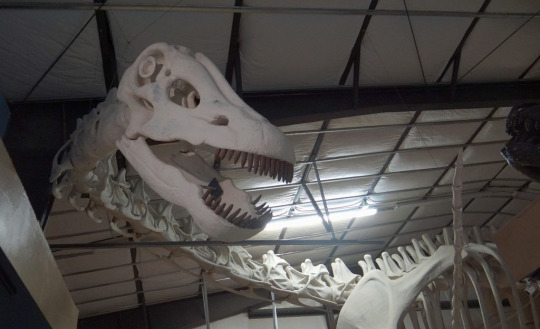
(Fun fact, this model is in the Montana Dinosaur Center where I worked last summer and I totally got to sleep under it. I know, I'm a nerd).
Speaking of Montana, it has two sauropods, Suuwassea

and Camarasaurus grandis.
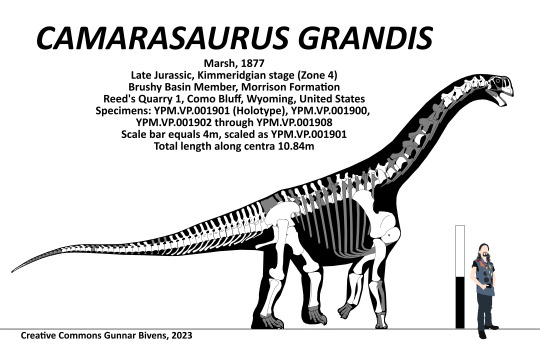
Again, not too bad numbers wise. Oklahoma also has two sauropods: Barosaurus lentus and Camarasaurus supremus.

Then we have Utah, Colorado, and Wyoming. Utah has 8 sauropods: Apataosaurus louisae, Brontosaurus parvus, Barosaurus lentus, Diplodocus hallorum, Camarasaurus annae, Camarasaurus lentus, and Dystrophaeus.
Colorado has 12 sauropods: Haplocanthosaurus, Smitanosaurus, Amphicoelias, Apatosaurus ajax, Apataosaurus louisae, Galeamopus pabsti, Supersaurus, Brachiosaurus, Camarasaurus grandis, Camarasaurus lewisi, and Camarasaurus supremus.
FInally, Wyoming has 14 sauropods: Haplocanthosaurus, Dyslocosaurus, Brontosaurus excelsus, Brontosaurus parvus, Brontosaurus yahrahpin, Diplodocus carnegii, Diplodocus hallorum, Galeamopus hayi, Galeamopus pabsti, Kaatedocus, Supersaurus, and Camarasaurus lentus.
Now, those numbers are little less believable. Let's take these three states and break them down more. Time. Each of these states has multiple members (layers I will discuss in another post later) that represent different stages in time during the Late Jurassic Period.
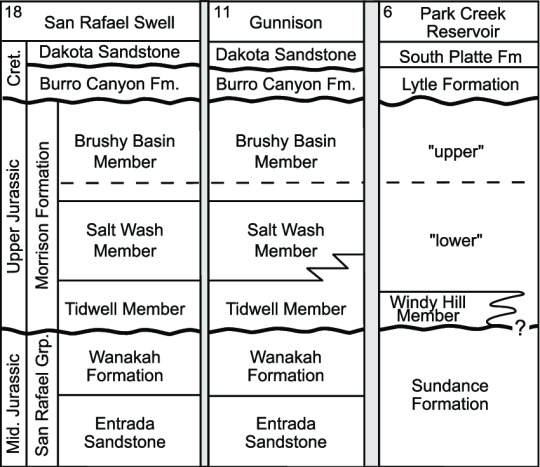
We will specifically be looking at the Tidwell, Salt Wash and Brushy Basin Members. Some of these can be broken down even more.
Utah: Dystrophaeus is the oldest sauropod, found in the Tidwell Member.
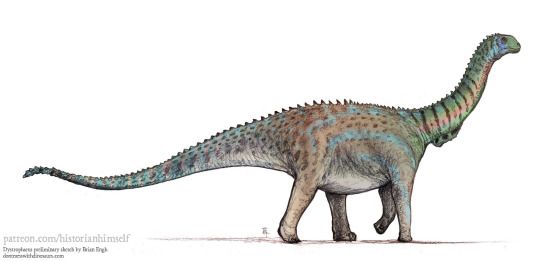
Diplodocus hallorum is found in the Salt Wash Member and the lowest Brushy Basin Member.

Brontosaurus parvus is also found in the Salt Wash Member while Camarasaurus lentus is found only in the lower Brushy Basin.
Finally, in the upper Brushy Basin we have Barosaurus and Apatasaurus louisae.
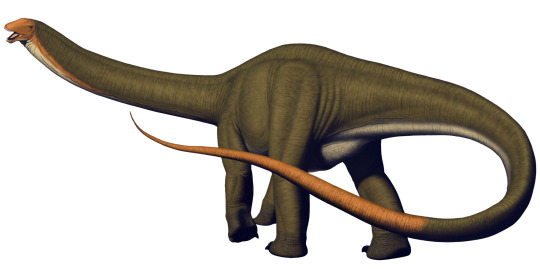
So that means one lived at the beginning of the Late Jurassic, two lived in the lower middle, two lived in upper middle, and two lived in the latest Jurassic. Again, not bad.
Let's do the same for Colorado. Camarasaurus lewisi was in the Tidwell Member (probably), Camarasaurus grandis and Brachiosaurus are found in the Salt Wash Member ( though Brachiosaurus can also be found in Brushy Basin) and the other eight are found in the Brushy Basin (Camarasaurus supremus and Supersaurus are only found at the very end).

That means one was alive in the early late Jurassic, two in the early middle Late Jurassic, nine in the Brushy Basin and two at the latest Jurassic. Possibly a bit but still better than 32.
Then there's Wyoming. No Tidwell there, but four are found in the Salt Wash Member (Brontosaurus parvus and yahrahpin, Diplodocus hallorum, and Kaatedocus), one appears only in the lower Brushy Basin (D. hallorum), one only appears in the upper Brushy Basin (Supersaurus) and the other 6 are found in the Brushy Basin Member (though one might actually be lower Cretaceous. Cedar Mountain Formation looks way too similar to Morrison for our sanity). Again, smaller numbers are better.
The other thing to keep in mind with numbers: we hardly find sauropods in great numbers. The exceptions like Dinosaur National Monument show a catastrophic burial event and it's highly unlikely that all those dinosaurs died together at the same time.

But it's not just numbers. What about the environment? There is this terrible misconception that the Morrison was this semi-arid wasteland savanna but that is only true in one area: on the Colorado Plateau. It's due to the Plateau's popularity with geologists and paleontologists, it is a well-studied area. Most of the Morrison was lush, wet forests. At the site I work at we have tons of petrified wood and cycads in the entire layer.
Lake Too'dichi' was a saline lake just like the Great Salt Lake (about the same size too) and yes, it was an inhospitible place for animals just like the Great Salt Lake but guess what? NONE OF OUR SITES ARE NEAR THE LAKE. Imagine that. No dinosaurs near the big salty lake. However, near the receding Sundance Sea? In the big green forests? Yeah, crap loads of dinosaurs found there and each one filling a different niche.

So, the reality is, no. There are not too many sauropods in the Morrison Formation. They were prolific and lived for a very long time co-existing and evolving side by side.
Whew...that was a long post. Hope you learned something new!
#paleontology#dinosaur#fossils#fun facts#sauropod#diplodocus#brachiosaurus#camarasaurus#brontosaurus#utah#wyoming#colorado#montana#new mexico#oklahoma#south dakota#morrison formation#late jurassic#niche
7 notes
·
View notes
Text
Minimocursor phunoiensis - 13th Thai Dinosaur / Thai Runner

Minimocursor phunoiensis, was discovered in the Late Jurassic Phu Kradung Formation at the Phu Noi locality, Kalasin Province, Thailand, a highly productive non-marine fossil vertebrate locality of the Khorat Plateau. It is one of the best-preserved dinosaurs ever found in Southeast Asia.
This study provides a better understanding of the early evolution and taxonomic diversity of ornithischians in Southeast Asia.
Physiology
The not-fully-grown holotype is believed to be 0.6 metres (2.0 feet) long, similar to Agilisaurus. Larger remnants suggest that the fully grown animal would have been 2 meters (6.6 feet) long.
References
https://www.deviantart.com/ognimdo2002/art/Minimocursor-phunoiensis-971749125
#ognimdo2002#earth responsibly#science fantasy#earth#ibispaint art#art ph#rapunzel's tangled adventure#dinosaur#history#Minimocursor phunoiensis#Minimocursor#thai#thailand#Neornithischia#Neornithischian#ornithischians#Phu Kradung Formation#late jurassic#jurassic#animal#reptile#dinosaur art#paleoart#paleoillustration
4 notes
·
View notes